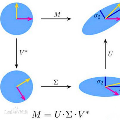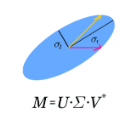Learning a dynamical system from input/output data is a fundamental task in the control design pipeline. In the partially observed setting there are two components to identification: parameter estimation to learn the Markov parameters, and system realization to obtain a state space model. In both sub-problems it is implicitly assumed that standard numerical algorithms such as the singular value decomposition (SVD) can be easily and reliably computed. When trying to fit a high-dimensional model to data, for example in the cyber-physical system setting, even computing an SVD is intractable. In this work we show that an approximate matrix factorization obtained using randomized methods can replace the standard SVD in the realization algorithm while maintaining the non-asymptotic (in data-set size) performance and robustness guarantees of classical methods. Numerical examples illustrate that for large system models, this is the only method capable of producing a model.
翻译:从输入/输出数据中学习动态系统是控制设计管道的一项基本任务。在部分观测到的环境下,有两个组成部分需要识别:用于学习Markov参数的参数估计,以及用于获取国家空间模型的系统实现。在这两个子问题中,隐含地假定,单值分解(SVD)等标准数字算法可以容易可靠地计算。在试图将高维模型与数据相适应时,例如在网络物理系统设置中,即使计算SVD也是难以解决的。在这项工作中,我们表明,使用随机化方法获得的大致矩阵因子化可以取代实现算法中的标准SVD,同时保持传统方法的非简单(数据集大小)性能和稳健性保证。数字实例表明,对于大型系统模型来说,这是能够生成模型的唯一方法。




